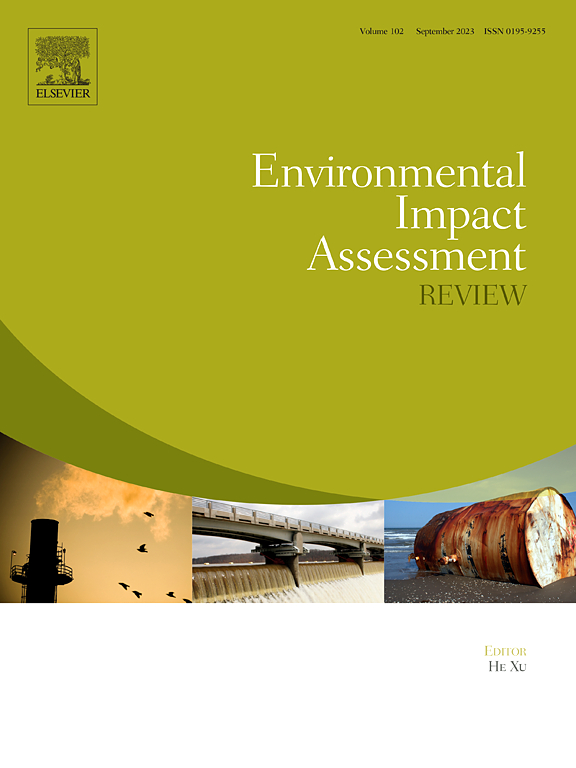Comprehensive assessment of the environmental impacts of China's new energy industry policy from life cycle perspective
IF 9.8
1区 社会学
Q1 ENVIRONMENTAL STUDIES
引用次数: 0
Abstract
The new energy industry offers significant environmental benefits and plays a pivotal role in addressing climate change and achieving sustainable development goals. However, research on the potential negative environmental impacts of the new energy industry from the policy level remains limited. To bridge this gap, this study integrates the quantitative evaluation method into the identification phase of policy environmental impact to comprehensively assess the environmental effects of China's new energy industry policy. The results indicate that the new energy industry predominantly exerts negative impacts on atmospheric, water, and soil environments, as well as on human health. Among atmospheric indicators, PM2.5 is particularly affected. Using Sichuan Province as a case study, a life cycle assessment reveals that the production phase accounts for over 80 % of the total environmental impact on atmospheric and water quality. A well-designed recycling strategy can significantly mitigate these negative effects. The results underscore the need to optimize the power generation structure and the layout of the new energy industry, as well as enhance the green production and recycling of lithium iron phosphate batteries. This study offers a novel approach and empirical reference for quantifying policy environmental impacts.
求助全文
约1分钟内获得全文
求助全文
来源期刊

Environmental Impact Assessment Review
ENVIRONMENTAL STUDIES-
CiteScore
12.60
自引率
10.10%
发文量
200
审稿时长
33 days
期刊介绍:
Environmental Impact Assessment Review is an interdisciplinary journal that serves a global audience of practitioners, policymakers, and academics involved in assessing the environmental impact of policies, projects, processes, and products. The journal focuses on innovative theory and practice in environmental impact assessment (EIA). Papers are expected to present innovative ideas, be topical, and coherent. The journal emphasizes concepts, methods, techniques, approaches, and systems related to EIA theory and practice.
 求助内容:
求助内容: 应助结果提醒方式:
应助结果提醒方式:


